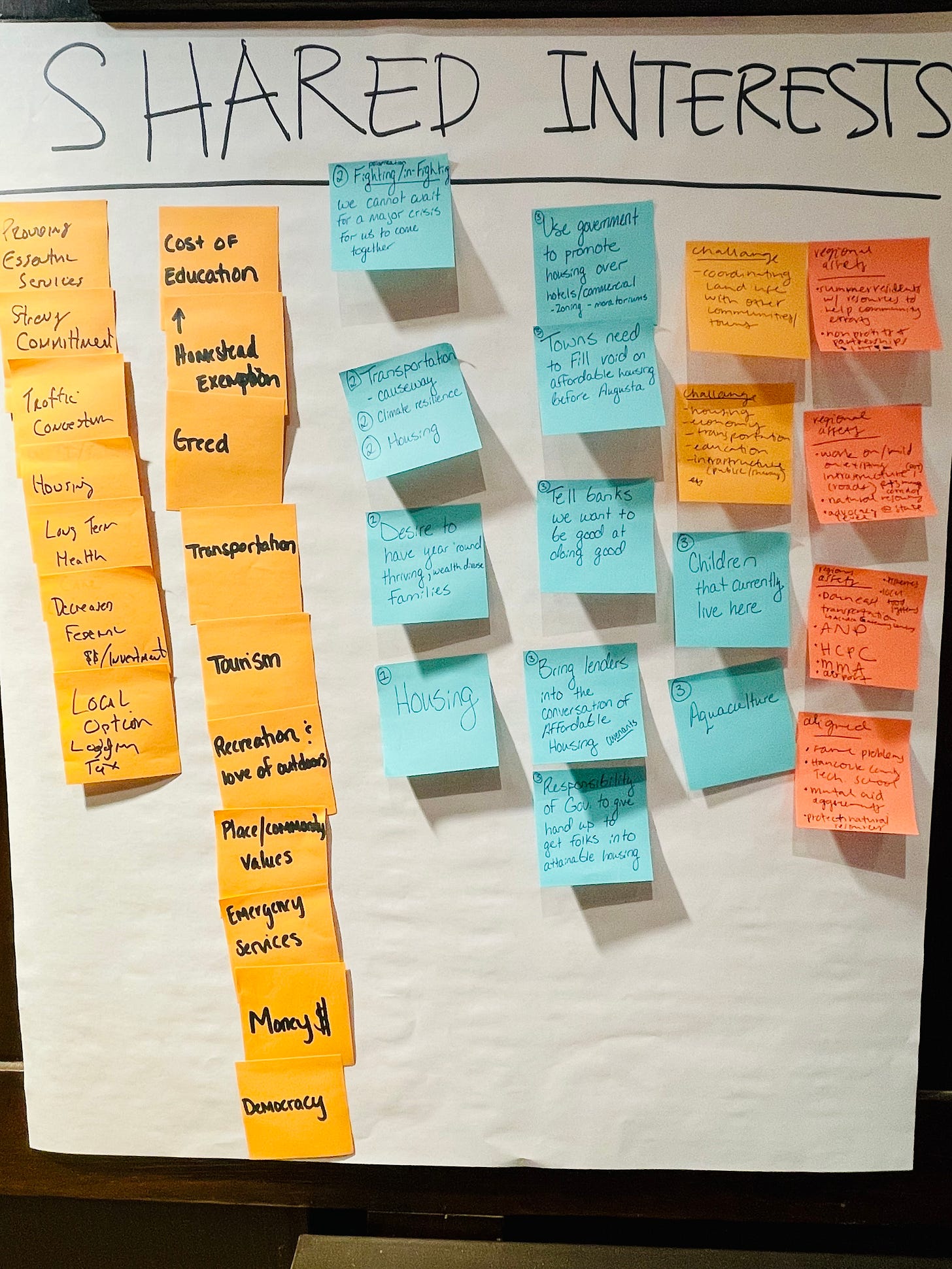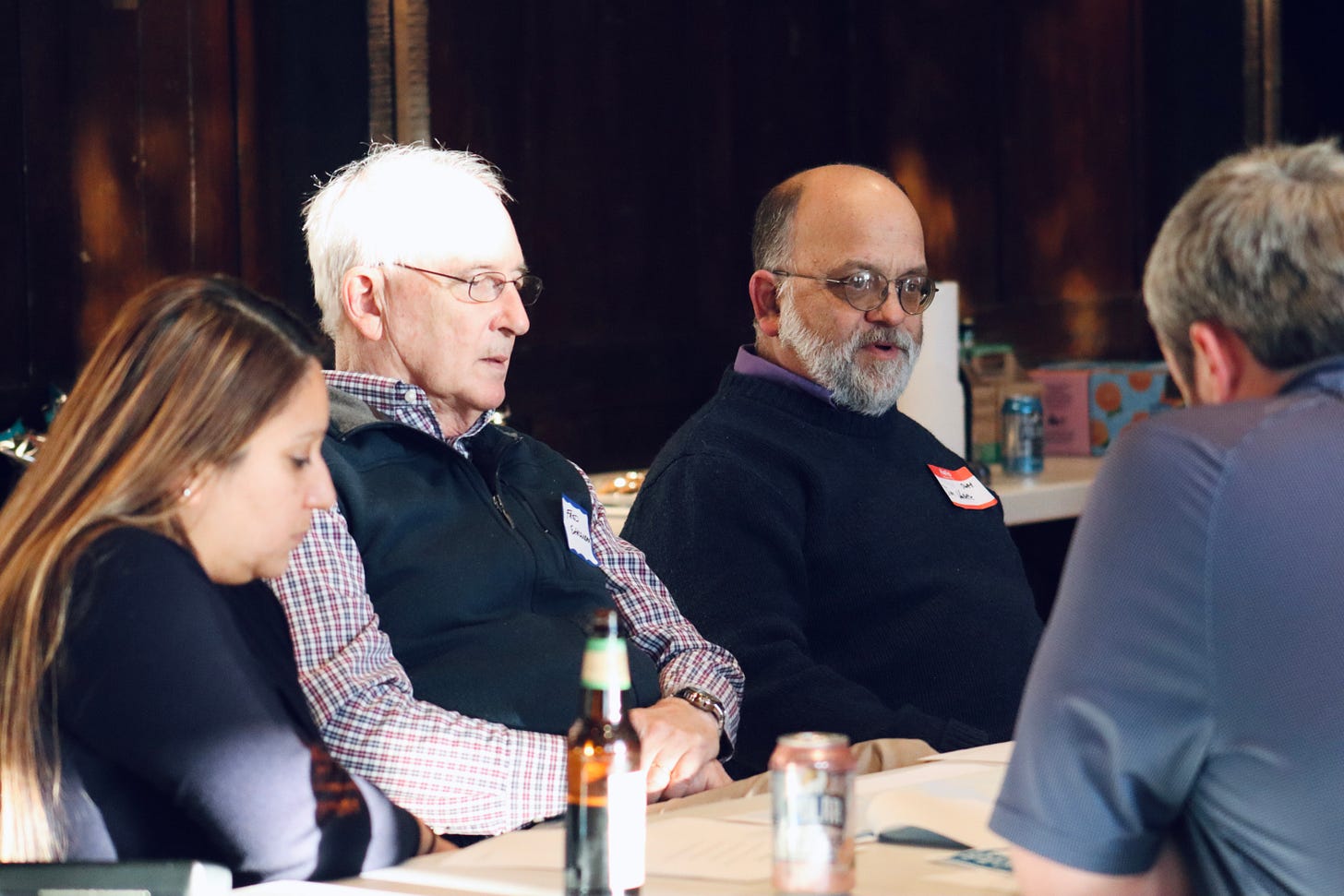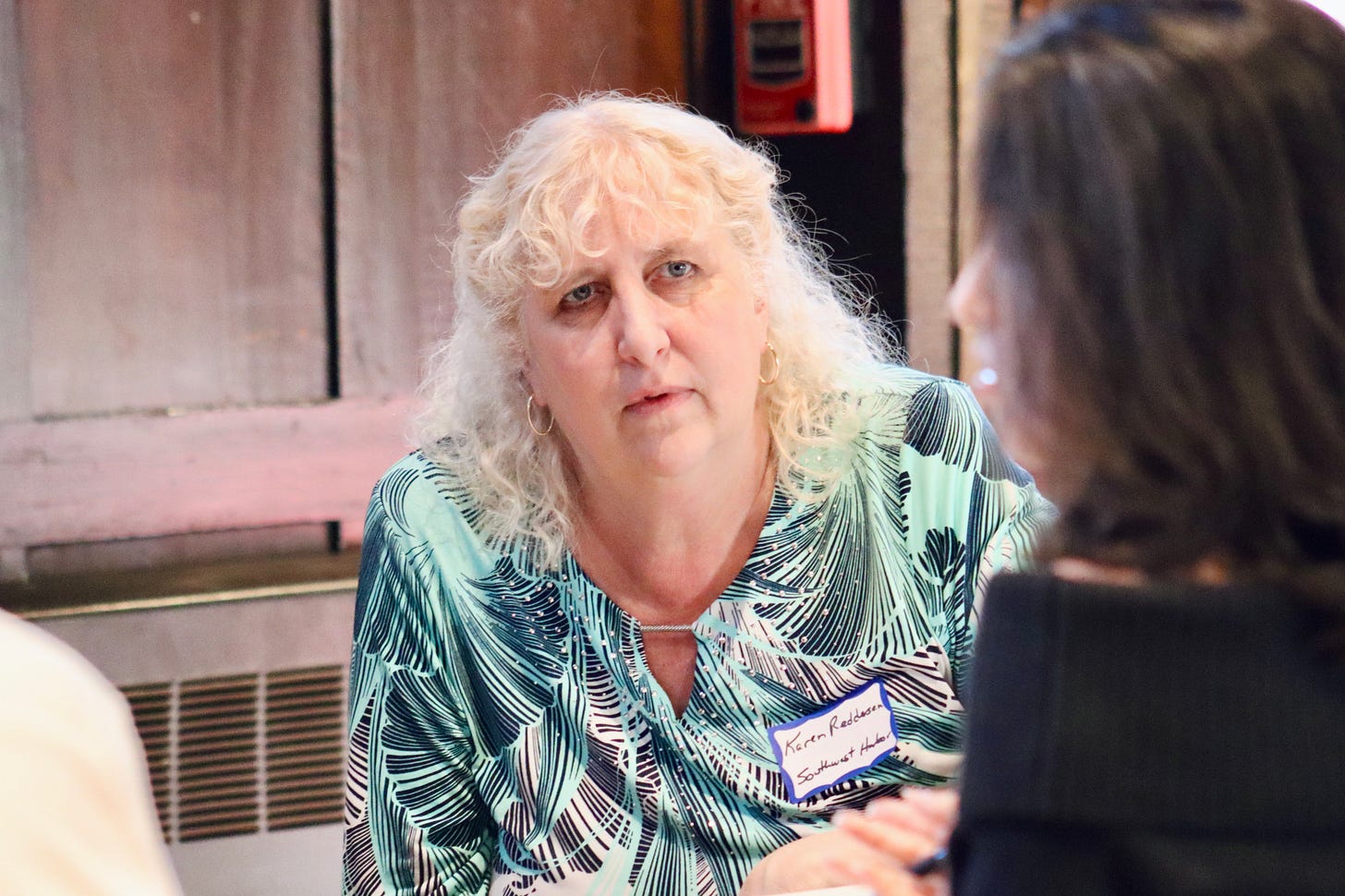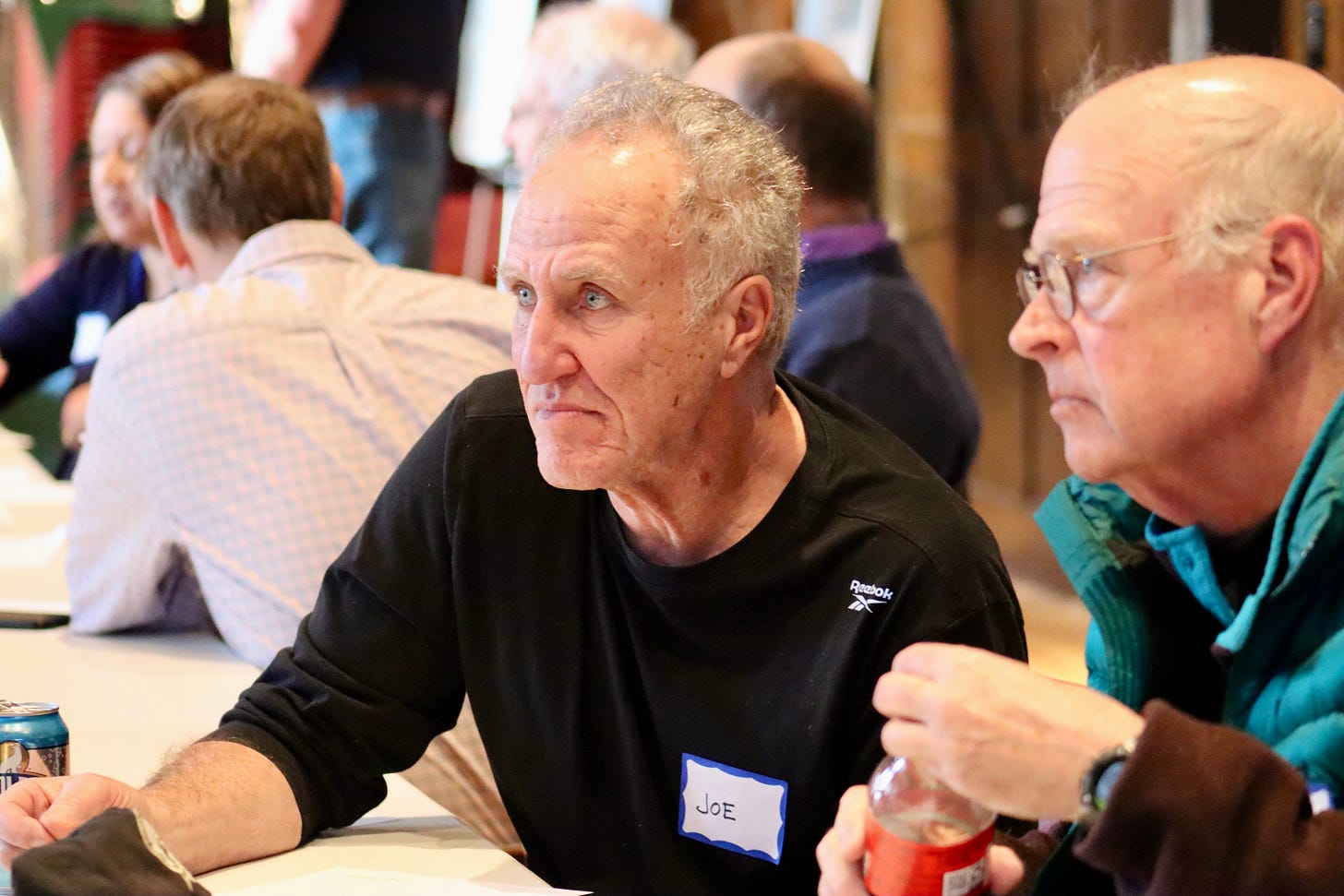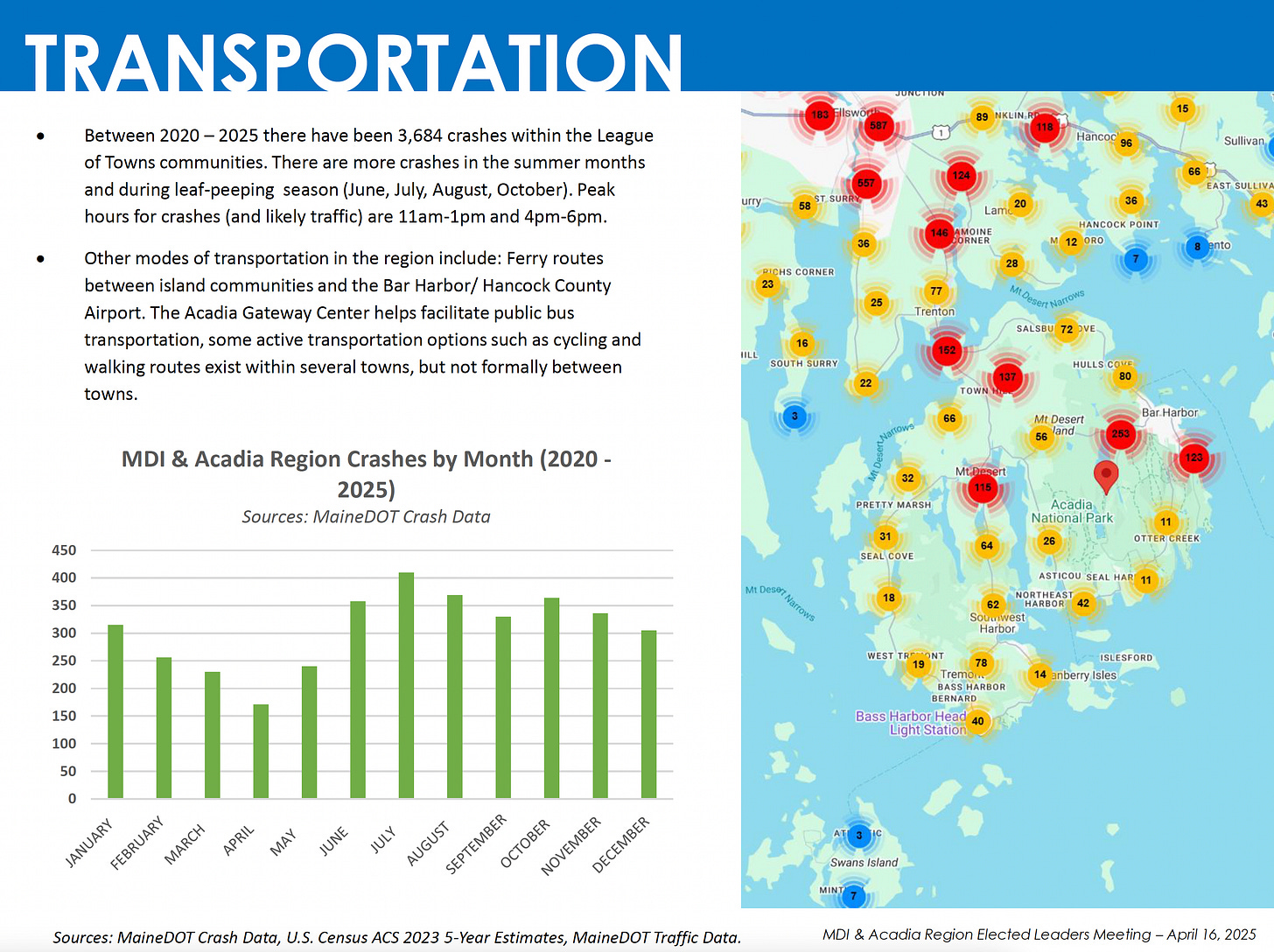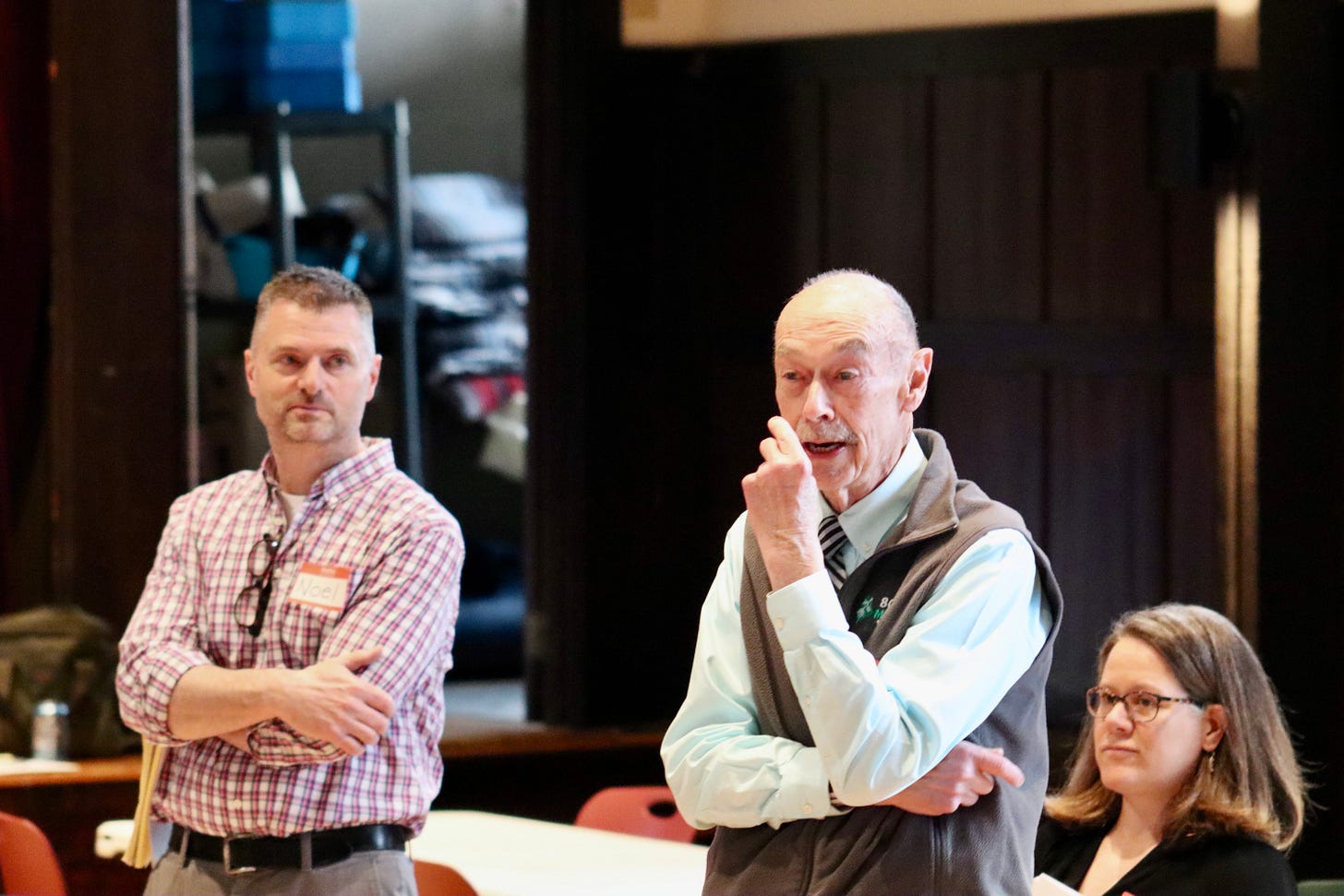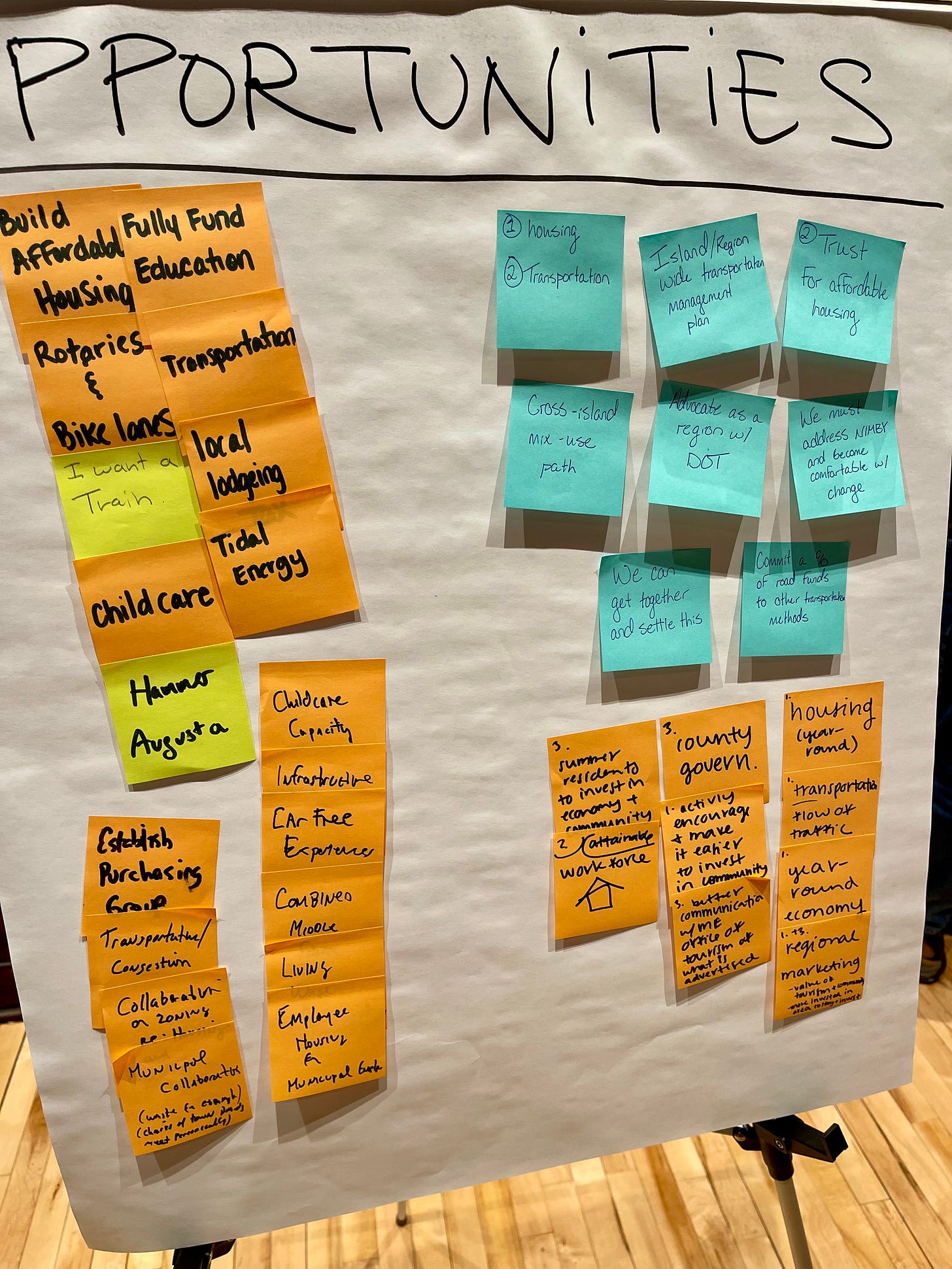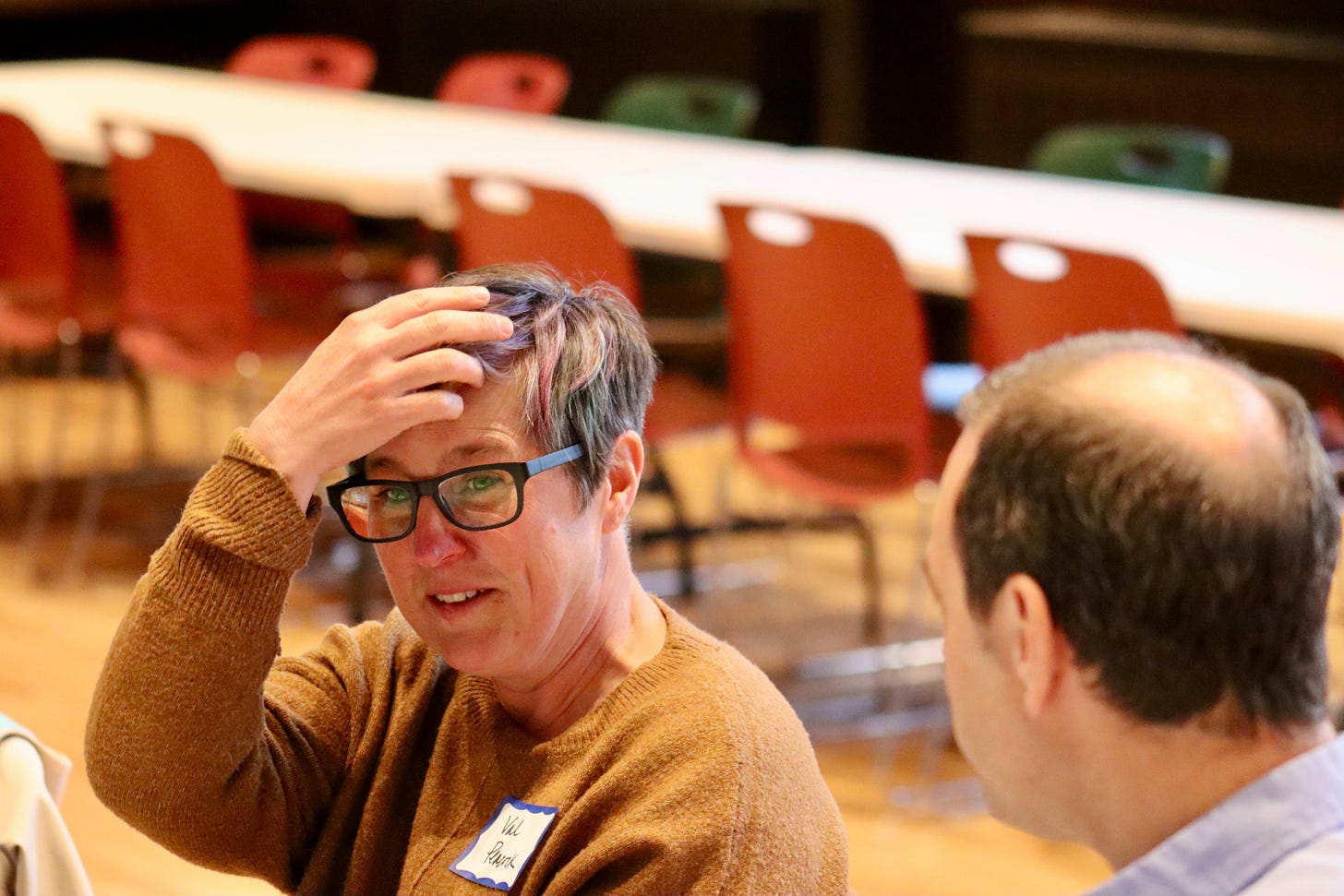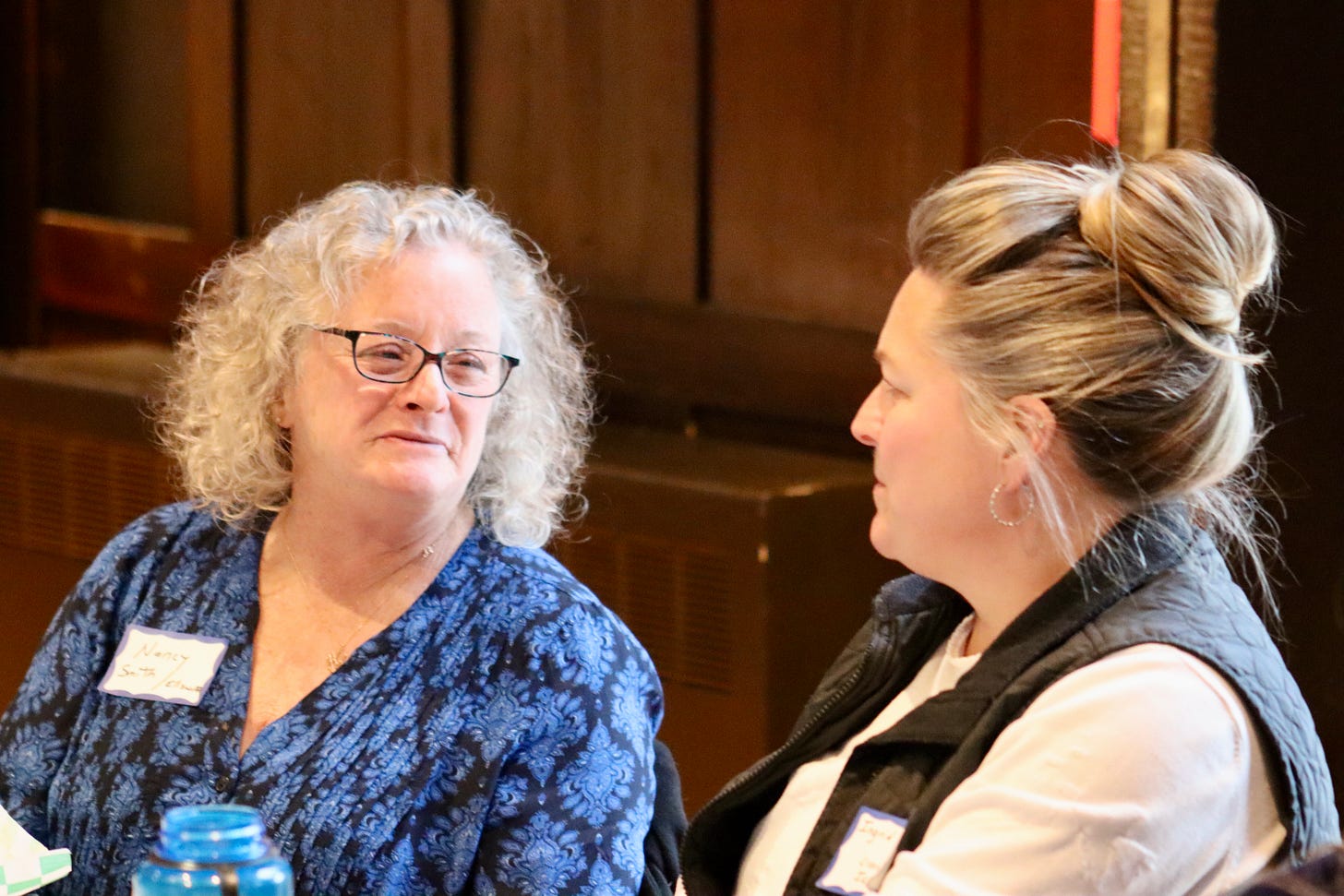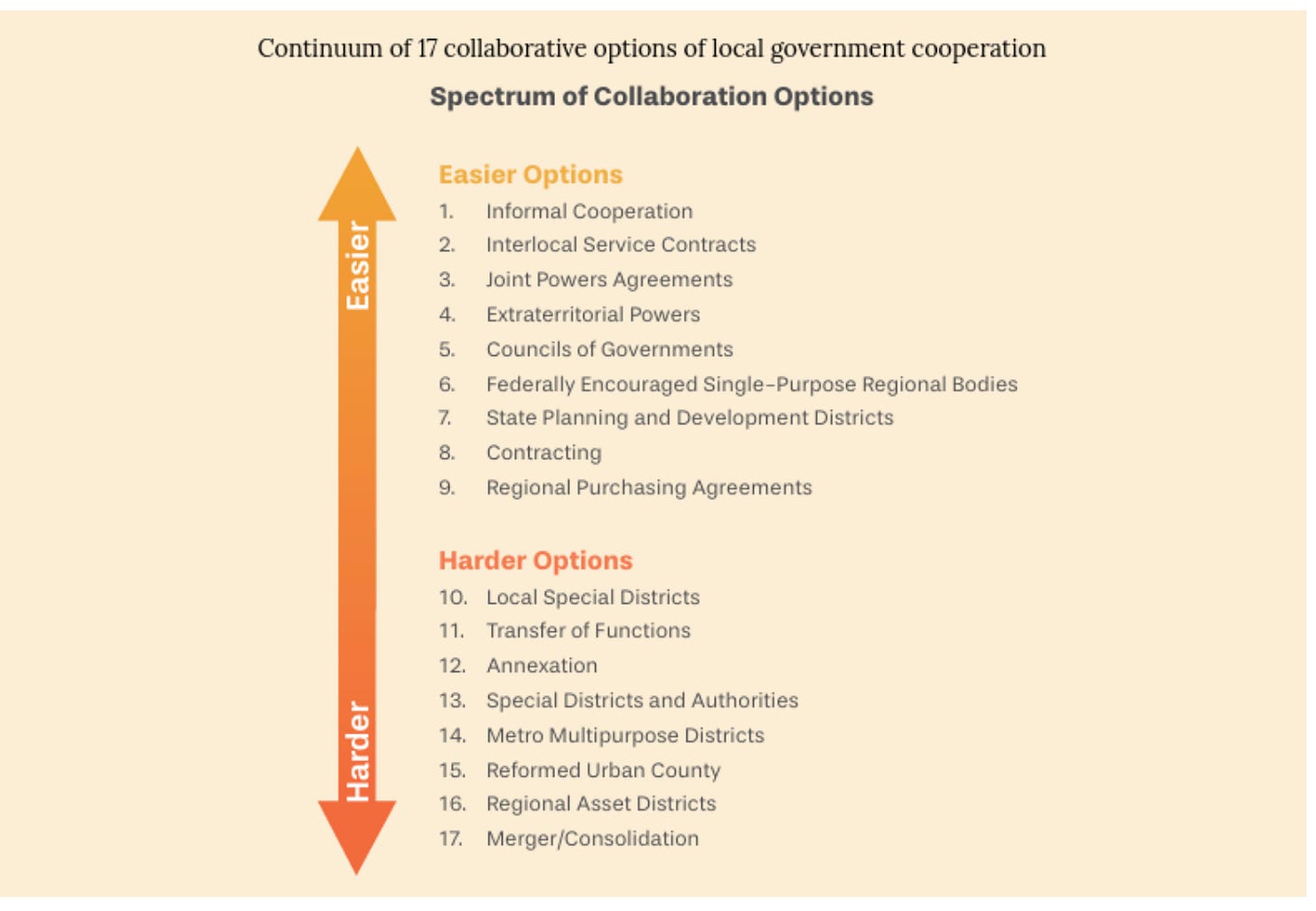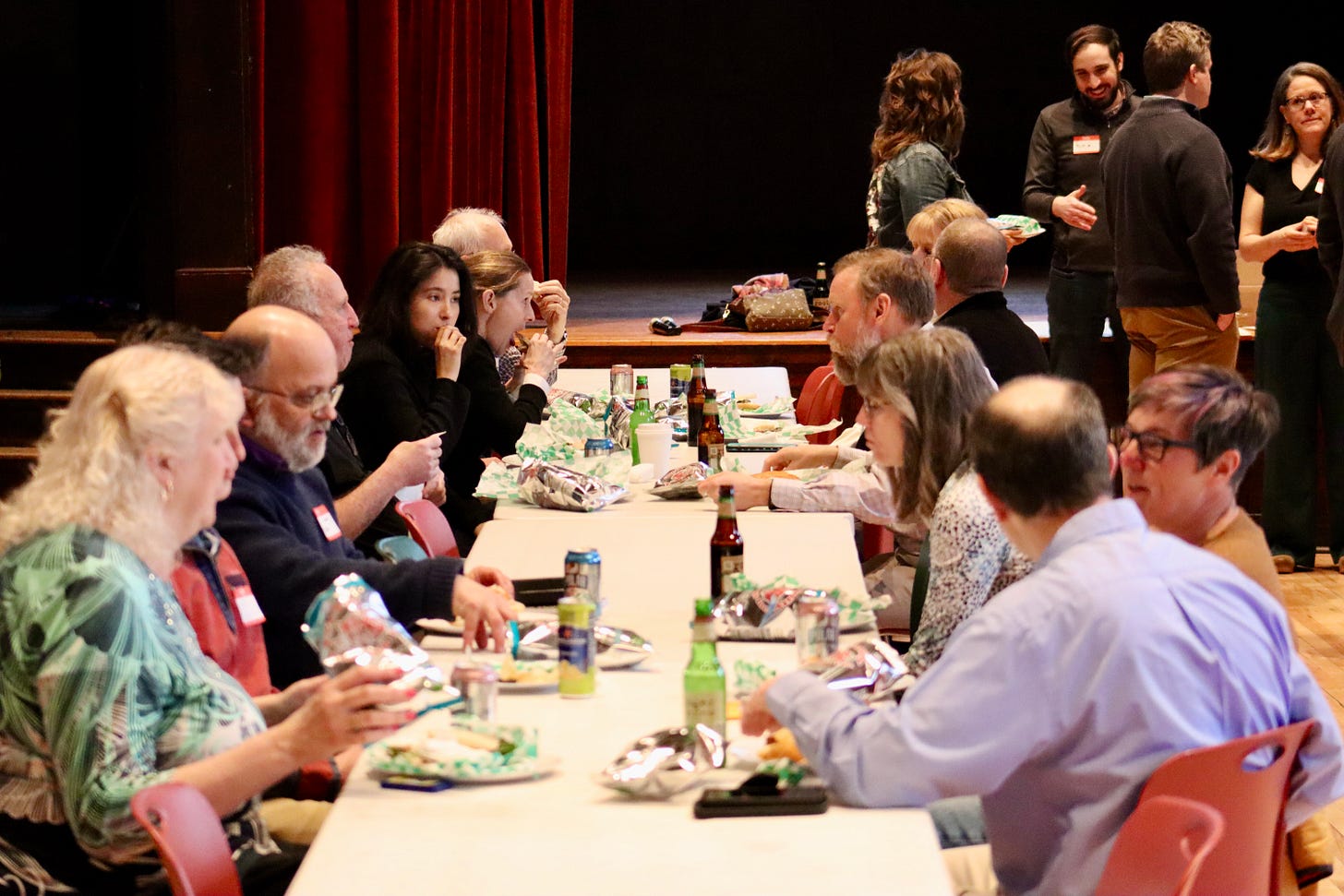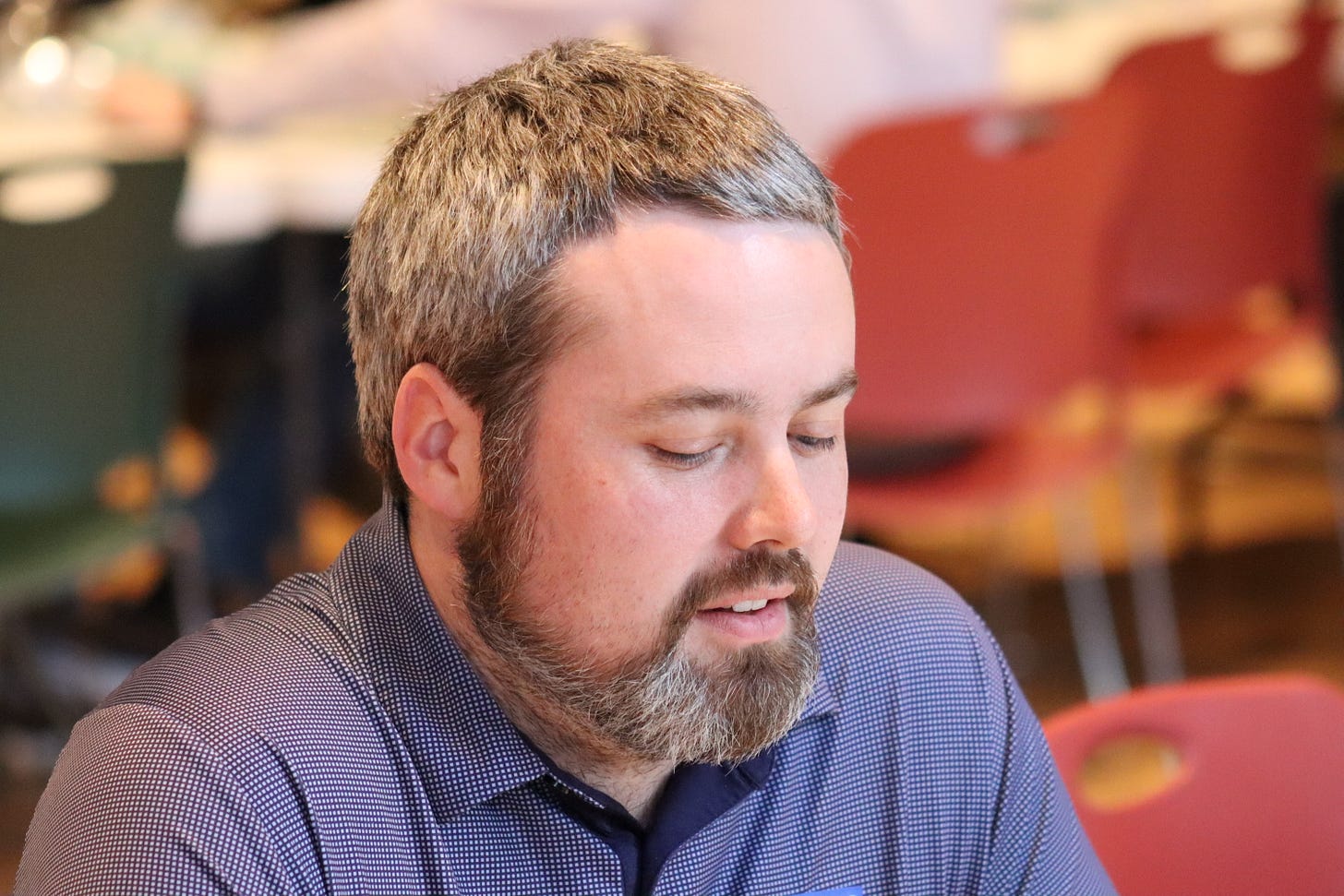What Do We Want Future Generations to Say We Did Right?
Elected officials from entire MDI region meet to plan for area's future
The Bar Harbor Story is generously sponsored by Swan Agency Real Estate.
MOUNT DESERT—What do we want future generations to say we did right?
That was one of the many questions at the League of Towns 2025 Spring Elected Officials’ meeting, April 16. Elected leaders and staff from the four island towns, Cranberry Isles, Ellsworth, Lamoine, and Trenton all gathered at the Neighborhood House for three work sessions about the municipalities’ shared interests, opportunities, and visions.
The League of Towns is a collaboration of staff and officials from those towns and Acadia National Park.
The questions created by the Musson Group, which facilitated the discussions, weren’t easy ones, but they inspired thoughts and ideas, business cards traded across tables, emails scribbled on notepad paper, and idea after idea, story after anecdote after story shared between select board members, town managers, and staff.
The goal is partly to build a work plan for all the towns to address common needs.
“There is great diversity in the league of towns,” Noel Musson of the Musson Group said to attendees. “I’m so thankful that you are dedicated enough to come out and have these conversations.”
And in that diversity is strength, but first the group had to understand its shared vision, values, goals, and challenges.
To do that, though, there were questions the group needed to answer.
Those were questions like: What kind of region do we want to be known as in 10, 20, 30, 50 years?
What values should guide future decision making?
What challenges are bigger than any one of our towns can solve alone?
If our region won the lottery, what would you do first with the money?
Regional collaborations occur when different towns and/or cities join forces and work together to create opportunities or deal with challenges.
Along with the questions came some snapshots of data for the MDI and Acadia Region. That region includes all the towns on Mount Desert Island as well as Ellsworth, Lamoine, Trenton, Swan’s Island, and the Cranberry Islands. It hit on transportation, housing, the regional economy, and education.
EDUCATION SNAPSHOT
Overall, the entire area had a decrease in school enrollment of 4.6%. Some areas (Lamoine and Southwest Harbor) had increases.
Bar Harbor’s enrollment decreased by 2% between 2017-2024 according to the MDIRSS data.
Nationwide, “the fall 2023 total enrollment counts show a decrease of 0.2 percent compared to fall 2022 counts and a 2.5 percent decline from the 2019 level,” according to data from NCES. So, Bar Harbor’s decrease is less than the nationwide average, Trenton’s 2.4% decrease is close.
ECONOMIC SNAPSHOT
The region’s economy shows that 40% of the workers are in the large grouping of management, business, science, and the arts. According to the document, that includes teachers, lawyers, librarians, people in healthcare, or at the labs. The second highest grouping is of "sales and office” occupations. This 22% of the workforce includes retail, sales, bookkeeping, bank tellers, clerks, and others.
The region brings in workers to its 18 sectors. When using the Maine Department of Labor groupings, accommodation and food service is the largest sector with 16.4% of the work force.
TRANSPORTATION AND HOUSING SNAPSHOTS
Most people use automobiles to get around the region and to commute. Almost 75% use automobiles to commute, 64% of commuters drove by themselves.
Major congestion areas highlighted were the Oak and High Street intersection in Ellsworth, Trenton Bridge, all of Route 3 from the head of the island to Mount Desert Street, and Route 102 in Somesville. Though it mentions a majority of Route 3 in Bar Harbor as a congestion point, it doesn’t mention the stretches of Route 3 in Trenton (from the bridge to the intersection of the Buttermilk Road) or the Bayside Road as having similar issues.
HOUSING SNAPSHOT
The region also needs to add between 1,500 to 2,500 homes (apartments, condos, houses) to meet demand, it says, referencing the MDI & Acadia Region Housing Study.
“Most homes sold are unaffordable to local residents,” the report states.
The homes that do exist are mostly single-family. Approximately 72% of the homes in the region are owner-occupied. Most renters rent homes in Bar Harbor and Ellsworth.
Those who do own homes are aging and living alone in places with three or more bedrooms. This, the data set says, signals “potential demand for downsizing options.”
Homes off the island are becoming more expensive and increasing to almost the same costs as on-island housing. Approximately 6.7% of rented homes are vacant aa are .94% of owned homes.
Susanne Paul of the Musson Group said it was good to take it all in and look at how sectors highlighted relate to one another. Increasingly, she said, all of the communities are becoming too expensive for the median income. That impacts school population, labor availability, and traffic congestion.
“I think it’s interesting to just connect the dots,” between the areas and the data, she said.
Automobiles dominate transportation in the region which has an aging population and where people are commuting farther to work. The housing stock is dominated by single family homes. There are 18 different industry sectors that comprise a majority of the region’s economy of the region. Those links and shifts create ripple effects throughout the towns, the infrastructure, and the support required to address those needs.
“Our population is also becoming more educated,” Musson said.
COLLABORATIONS
The League itself is a collaboration between town governments and meets almost every month, led by current president and Mount Desert Town Manager Durlin Lunt. Musson and Mount Desert Select Board Chair John B. Macauley praised Lunt for his vision and leadership. Lunt has said he intends to retire this year.
During the Wednesday evening discussions, participants spoke about increasing potential collaborations, which Lunt has encouraged.
Ellsworth City Councilor Nancy Smith mentioned that the county could be an important part of collaborations.
Specific types of collaborations weren’t heavily addressed at the meeting, which focused on shared visioning, values, opportunities, and challenges that the attending towns and Ellsworth share.
“Some policy and program areas are more ripe for city-county collaboration than others. This is because certain areas lend themselves to more regionalized solutions or are more effective when funding can be combined. Further, city and county governments tend to have certain areas of expertise and capabilities due to their respective functions noted above,” according to Results for America.
Potential collaborations about housing, lobbying the state for transportation needs and wants (such as a multi-use corridor connecting the towns, but not open to automobiles), health care, long-term care, childcare, were all mentioned as possibilities.
Our communities are facing a lot of challenges, Musson told those gathered. Those challenges include congestion, limited staff, aging population, need for more housing, and transportation issues.
The goal, he said, was to focus on big picture strategies together as a region while still respecting what makes all of our communities unique and special.
Current collaborations include the Hancock County Technical Center, shared emergency services in different areas, as well as Downeast Transportation. A shared asset mentioned was the airport in Trenton.
WHAT KIND OF REGION DO WE WANT TO BE KNOWN AS IN THE FUTURE?
When it came to the question of what the region would be like in the future, participants shared that they want to be a region that comes together and works together to succeed; sustainable communities where there is collaboration among governments, a growth mindset. They wanted efficiency and stewardship of place where equity was a value.
And when it came to what they wanted future generations to say the officials did right?
Lunt quickly said that he wanted the future residents to know that “we made the steps to allow the future generations to even be here.”
“Without people, you don’t have a community; you have nothing,” Bar Harbor Planning Director Michele Gagnon agreed.
Bar Harbor Town Council Chair Valerie Peacock mentioned continued access to the park and ocean resources.
Others mentioned a diversified economy, a collaborative decision making system, climate resiliency, and health care.
Another measure of success?
“If we didn’t have to have a meeting like this to discuss survival,” Lunt said.
THE CHALLENGES
Mount Desert Selectboard member Rick Mooers said that a big obstacle is that younger people have to work for two years and provide pay stubs for those years to lending institutions to buy a home. He suggested towns use Island Housing Trust as a model and guarantee or cosign loans.
He said, ”It’s a no-lose scenario.”
“It’s not a handout. It’s a hand up,” Gagnon agreed.
“There’s no handout about it,” Mooers reiterated.
Transportation was mentioned as a challenge that is too big for any single town to handle alone. So were labor and housing shortages. There was discussion of listening to different communities and bringing everyone to the collective table in local and broader communities as well as being respectful and tolerant of all the needs of those communities.
The goal, many said, was to have thriving year-round, diverse families.
Peacock said that tourism can help the towns be the best they can be instead of only being viewed as a ruining force.
“Unmanaged it’s a liability; if it’s well managed, it’s an asset,” Acadia National Park Superintendent Kevin Schneider agreed.
Gagnon said, “We’re not going to make change if the leadership is not at the same table discussing those matters.”
“That’s the heart of why we’re here tonight,” Musson said, to find the goals they can all get behind.
Photos: Shaun Farrar/Carrie Jones
LINKS TO LEARN MORE
Follow us on Facebook. And as a reminder, you can easily view all our past stories and press releases here.
If you’d like to donate to help support us, you can, but no pressure! Just click here (about how you can give) or here (a direct link), which is the same as the button below.
If you’d like to sponsor the Bar Harbor Story, you can! Learn more here.










